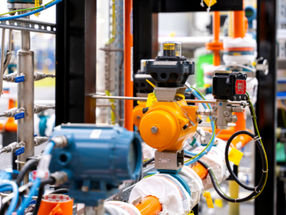Growth Potential: Ceresana Forecasts Chances for Polypropylene
Advertisement
polypropylene (PP) can be found everywhere: in packaging materials and household items, in clothing as much as in vehicles and countless other products. "About 55.1 million tonnes of polypropylene were consumed in 2013. Thus PP is the second-best selling type of plastic after polyethylene", explains Oliver Kutsch, CEO of the market research institute Ceresana. "We forecast global revenues to increase by about 5.8% p.a. until 2021." Ceresana's analysis of the polypropylene market has just been published in its third edition.
Demand Increasing in Asia in Particular
The opening up of new application areas, the development of bioplastics made from renewable resources and the substitution of other materials offer a high growth potential for the polypropylene market. China and India continue to see a massive increase of demand, which is why Asia-Pacific is expected to account for about 58% of total global demand in 2021. The USA, the largest sales market for rigid plastic packaging, also report an increasing demand for polypropylene. In Germany, Italy, and France, the three largest consumers in Western Europe, on the other hand, demand hardly rises anymore. The world market share of Western European PP producers is anticipated to fall from 13.9% to 11.4% in upcoming years. The sales volume in Eastern Europe is rising much more dynamically. Especially in the Russian packaging sector PP is able to gain at the favor of competing plastics like PET and PE.
Well Packed with Polypropylene
More than half of global PP output is processed into packaging products. The largest sales market is flexible packaging made from PP films. Rigid PP packaging, e.g. containers and caps, rank second. Fibers made from PP as well as consumer goods reached a share of around 12% each. The highest growth rate in the upcoming years is expected for consumption in the automotive industry. But the construction sector and the E&E segment are also likely to see PP demand increase by about 4% p.a. each.
Moderate Increase of Prices
The raw material situation will continue to relax, since production capacities for the PP feedstock propylene will be expanded notably in the future. Especially China will increase the use of alternative technologies to produce propylene (mainly PDH plants and CTO technology). As a result, the country will also construct several new plants for the production of polypropylene. A detailed analysis of production capacities in each country and of each company paints a conclusive picture of future growth regions. The region Asia-Pacific already accounts for almost half of the total global capacity and is likely to increase capacities by another 40% in the next eight years. Other large-scale projects are planned in Eastern Europe and the Middle East. Accordingly, prices for propylene and revenues will rise only moderately despite the dynamic increase of demand.
The Middle East Supplying the World
Due to a reduction of output, Western Europe will turn from a net exporter to a net importer of polypropylene. Despite an increase of own production, Asia-Pacific will reach a net import of about 2 million tonnes of PP. China first and foremost needs its output to satisfy domestic demand. Should all scheduled PP projects be realized, the Middle East in particular will considerably increase net exports and satisfy the rising global demand.






























































